Trade and seafaring
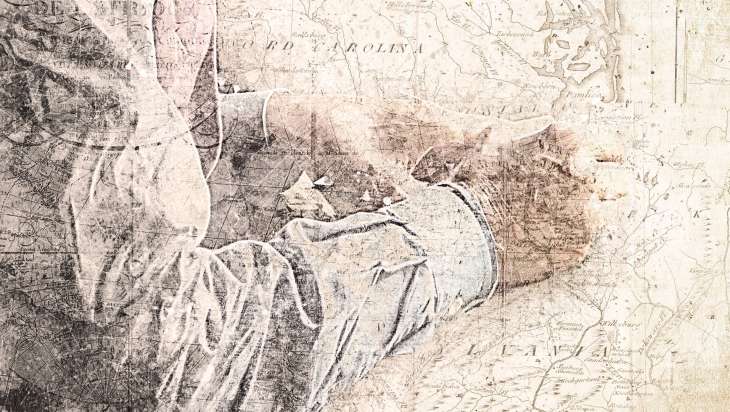
At the beginning of the era the Port of Turku was known as far as the Mediterranean countries. For that we are to thank the Arab Al-Idris who drew the port under the name Abuwa in his map in 1154. Internationalisation was speeded up by the Hanseatic League; the German trade organised by them concentrated on the river harbour built around the Unikankare area in the late 13th century. The river harbour was formed by the storehouses of the burghers. The cogs of the Hanseatic traders moored in their berths and dominated the cityscape together with the square, the cathedral and bourgeois houses. Thanks to lively international connections Turku developed naturally into the capital of Finland.
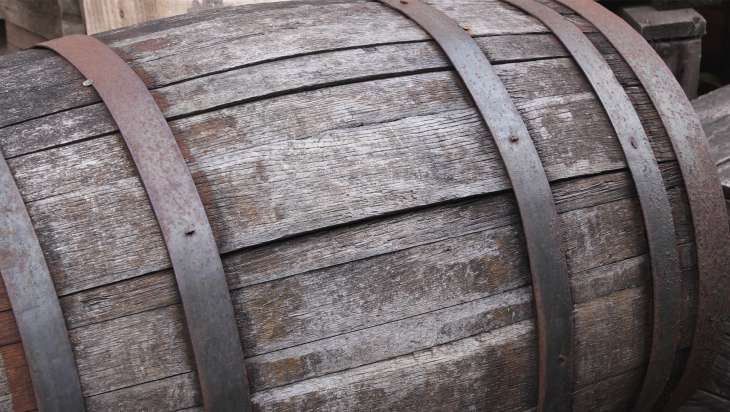
Turku’s position as the centre of Finland’s foreign trade strengthened. Ships sailed to and from all key ports of the Baltic Sea. Through Turku the Baltic herring and dried fish found their way to the European tables. On their way back the ships carried e.g. salt and wines to spice up the life of Finns.
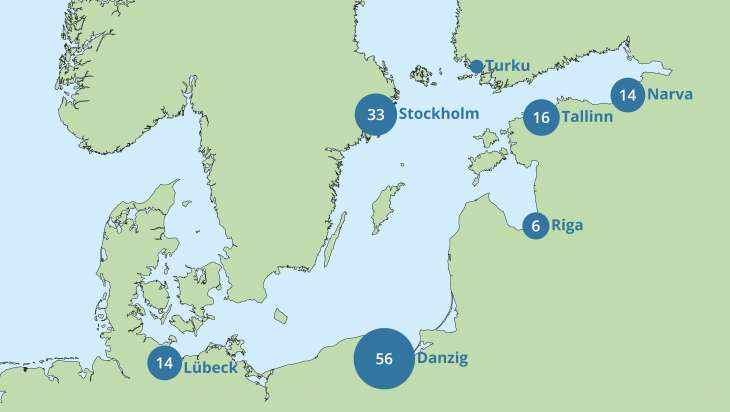
Magnus Eriksson’s law of the realm granted Turku a free right of sailing while other Finns only had the permission to sail to Turku or Stockholm. At first the main sailing destination from Turku was Lübeck, but in the early 15th century Danzig became the most important destination port. In the 16th century, around half of the ships departing from Turku headed to Danzig, a quarter to Stockholm and the rest e.g. to Lübeck, Tallinn, Narva and Riga.
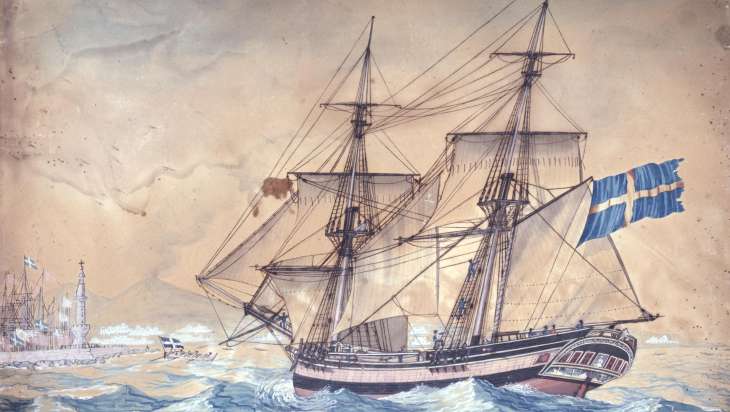
As the European courts battled with each other, tar was shipped from Turku for the preparation of warships. Tar trade and the related sailing to Holland extended Turku’s trading connections to the North Sea. Men were also transported to the battlefi elds, as Finnish warcraft was needed e.g. in the Thirty Years’ War. Riverside storehouses and loading berths remained by the River Aura. As the river became shallower, large ships were forced to stay on the Linnanaukko roads where they were loaded from barges. The rising of the ground and the sludge carried by the River Aura made the river and the Linnanaukko area even shallower, and hence regular dredging was begun in the area between Pikisaari and the Great Square in 1793.
The decreased sailing operations in Turku recovered in the 1730s. At the end of the next decade Turku had 12 deep sea sailing ships that carried timber, tar and iron all the way to the Mediterranean and brought back salt, tobacco, sugar and wine.
Image: Turku Museum Centre
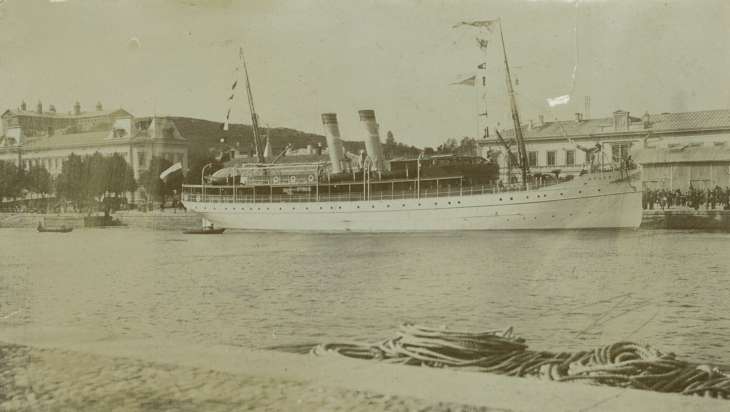
In the early 19th century, Turku was still the leading port in Finland. Most of the connections were on the Baltic Sea, but sailing on the North Sea, the Atlantic Ocean and the Mediterranean increased. In the mid-1800s, ships arrived in Turku from as far away as Argentina. The city’s merchant fleet included, for example, large salt ships that carried cargo on the oceans at wintertime.
The role of the Port of Turku also as the bridge from Finland to Scandinavia for travellers was emphasised by the regular steamship traffic. The first steamship, paddle wheel schooner Stockholm began to operate between Turku and Stockholm in 1821. In the 1830s, regular steamship traffic was operated to Stockholm, St Petersburg and Helsinki.
Image: Turku City Archives
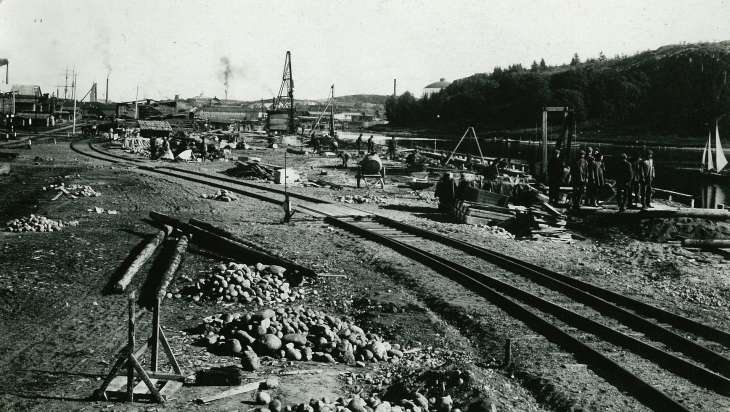
The arrival of the railway in the port and the building of the Kanavaniemi quays made the traffic in the port considerably livelier. Steamships carried two thirds of the cargo. The regular wintertime traffic between Turku and Stockholm operated by Bore was transferred to Kanavaniemi in 1901, and it was possible to continue from there by train, tram or horse-driven carriage.
Image: Turku City Archives
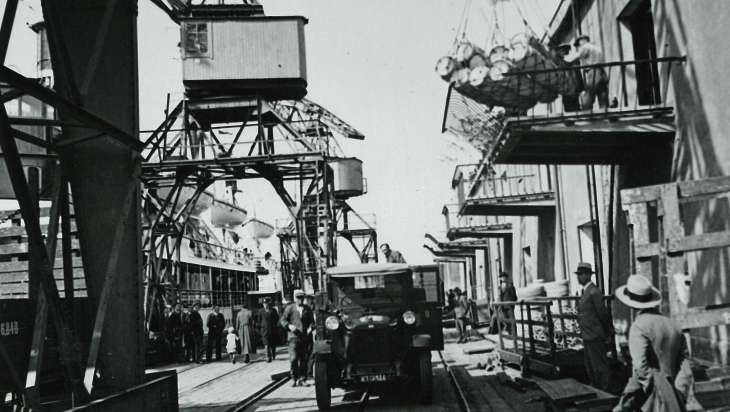
In the 1930s, an oil harbour was built in Pansio and it became an important import and distribution harbour for oil products. Butter became one of the key export products, and the exports were concentrated to the butter warehouse built in 1934.
Image: Turku City Archives
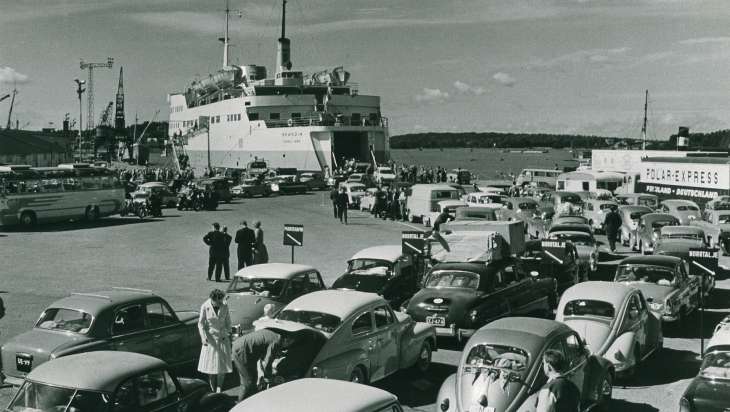
The Linnanaukko quay was completed in 1955, followed a few years later by the west quay. In the 1960s, Turku became a major port for car imports.
Image: Port of Turku Ltd Archives
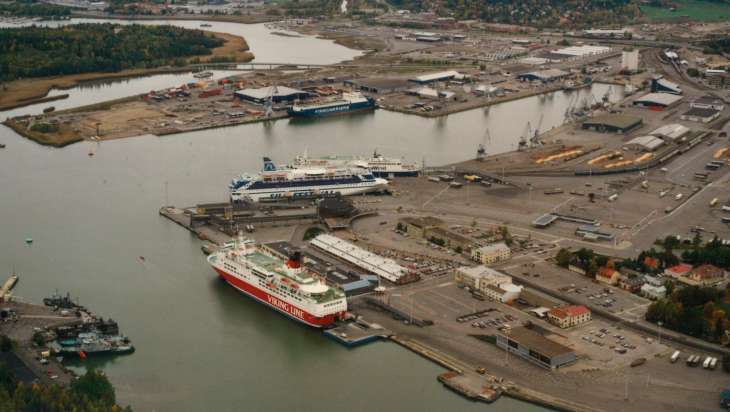
In the second half of the 20th century, passenger and cargo traffic became more efficient thanks to new types of car ferries. The first ferry to operate between Turku and Stockholm was Silja’s Skandia in 1961. Viking Line started ferry operations in 1973. Today, there are three daily departures from Turku to Stockholm that carry cruise and car passengers as well as lorries.
Image: Port of Turku Ltd Archives
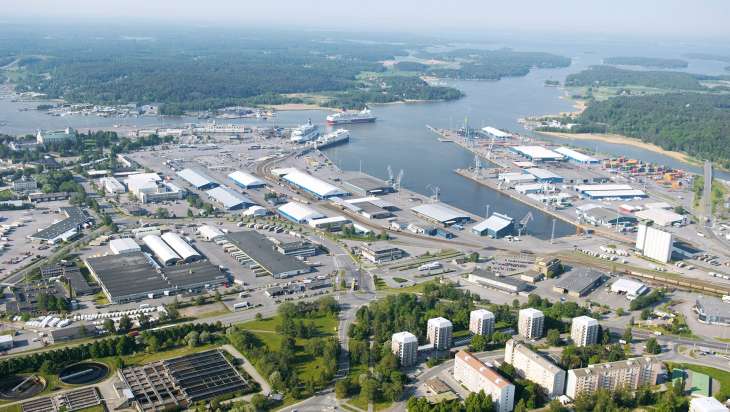
The early decades of the 2000s were a time of strong and continuous development at the Port of Turku. Numerous significant investments were made in the port by the Port Authority, the City of Turku, shipping companies, and other logistics operators. Alongside the construction of port infrastructure, investments were also made in reducing the environmental impact of port operations, enhancing port security, and advancing digitalization. The aim of these investments was to ensure port operations in accordance with the principles of sustainable development and to improve operational efficiency by utilizing the latest technology. One of the most important milestones of the 2000s was the corporatization of port operations at the beginning of 2013. For the port’s customers and partners, this reform meant even more flexible collaboration and faster response to their changing needs.
Image: Port of Turku Ltd Archives
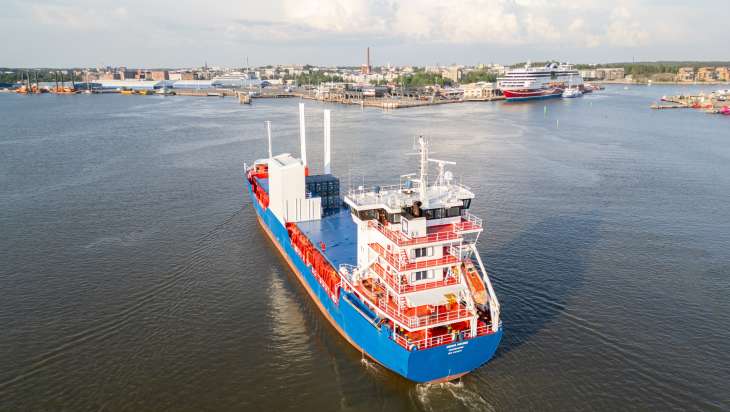
The Port of Turku is a hub of maritime traffic that supports the region’s economy and enhances its competitiveness. The port’s flexibility and efficiency enable smooth passenger and freight traffic, which is vital for both the local economy and the broader region. In passenger traffic, customers are served by modern vessels designed for comfortable travel. The logistical needs of businesses are met by frequent connections to Baltic Sea ports and highly efficient logistics centers. The development of the port is driven by customer needs and environmental considerations.
Image: Port of Turku Ltd Archives

